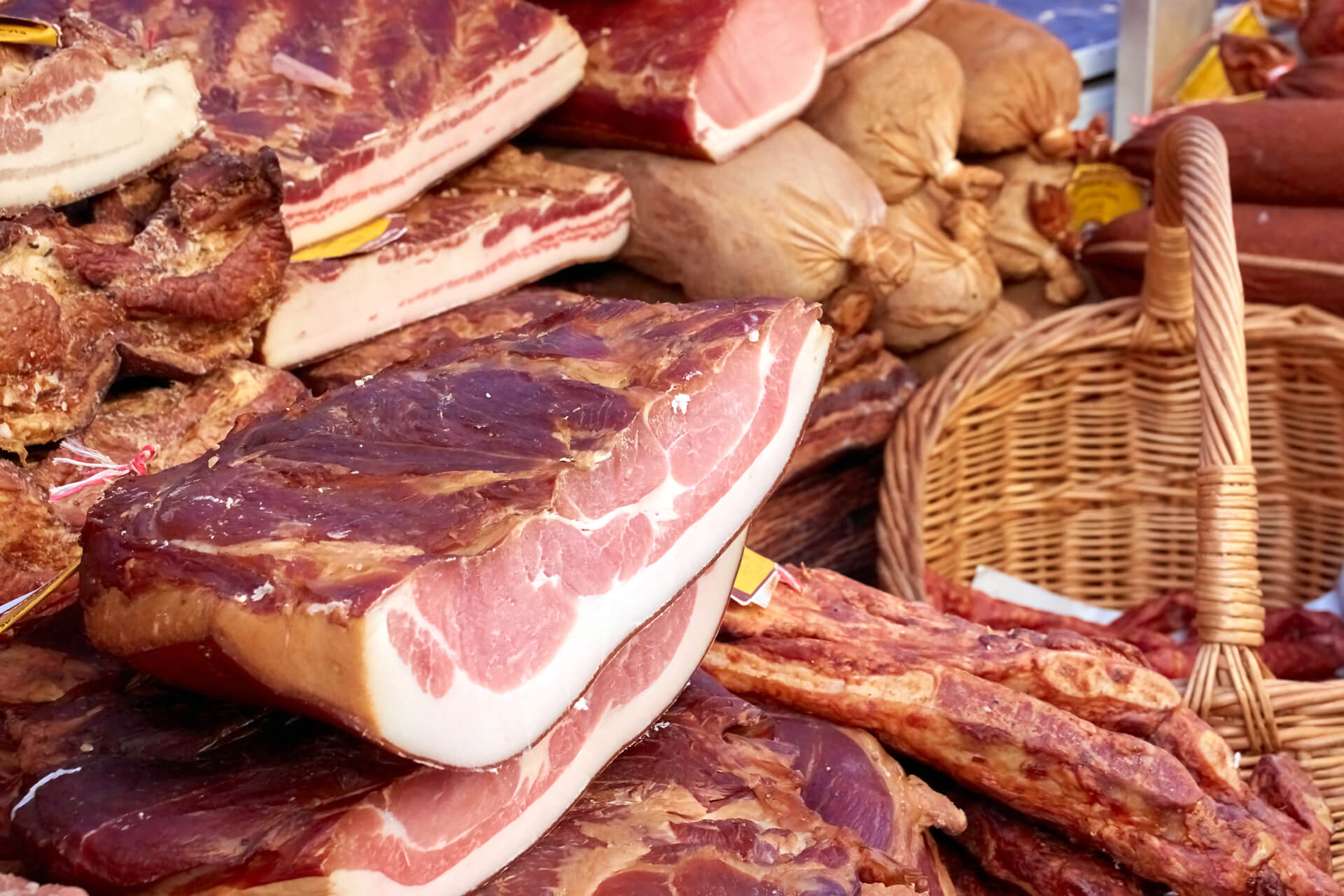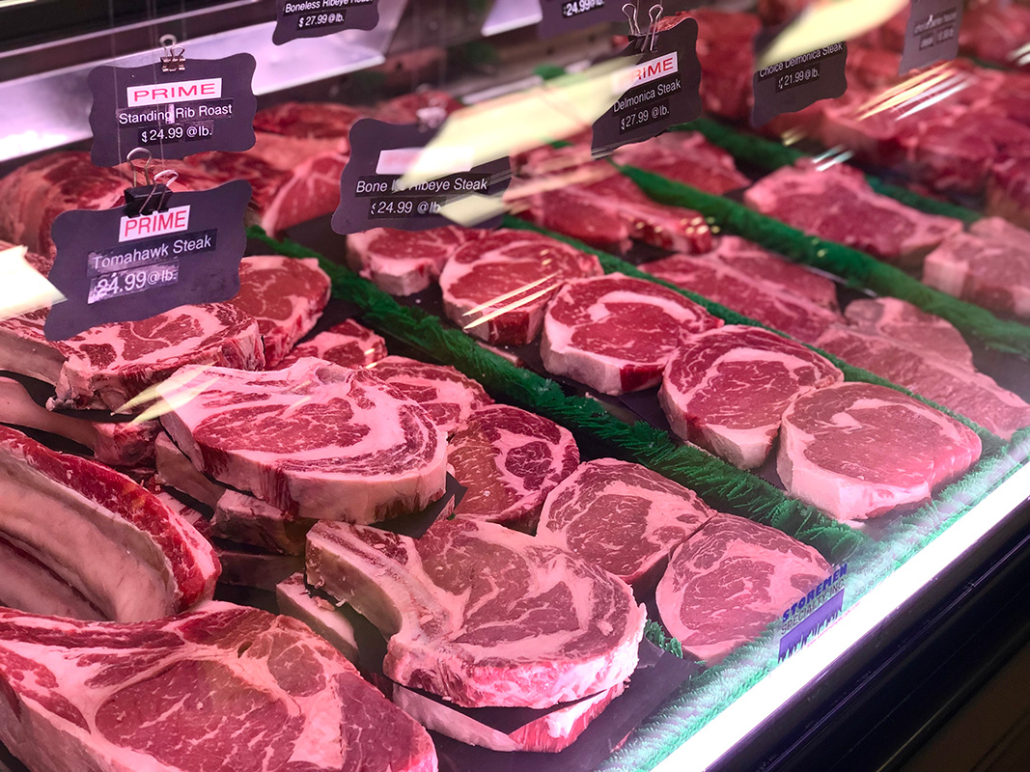What Makes Bagley Farms Meat Market Edwardsville IL Stick Out for Meat Lovers
What Makes Bagley Farms Meat Market Edwardsville IL Stick Out for Meat Lovers
Blog Article
Uncover the Art of the Butcher's Cut in a Modern Meat Market
In the ever-evolving landscape of contemporary meat markets, the butcher's cut has transcended its traditional origins, merging olden workmanship with contemporary techniques. What really establishes the modern butcher apart is their capacity to forge a much deeper link between customers and the origins of their meat.
Development of Butchery Strategies

The mid-20th century saw butchery strategies better fine-tuned by scientific insights right into muscular tissue biology and meat aging, improving both tenderness and taste. Technologies like vacuum cleaner packaging and refrigeration extended item shelf-life, enabling butchers to diversify offerings and enhance high quality control. This period additionally marked the rise of customized devices, such as band saws and meat slicers, which enhanced accuracy and effectiveness in meat processing.
Digital systems now assist in tracking animal provenance and optimizing cuts to satisfy specific consumer choices. Furthermore, a revival in artisanal butchery has actually emerged, blending typical skills with contemporary knowledge to cater to customers looking for ethical and sustainable meat alternatives.

Understanding Meat Cuts

Recognizing the details of meat cuts is necessary for both butchers and customers seeking quality and worth. Each cut originates from a various part of the pet, presenting special flavors, textures, and food preparation techniques. Mastery of these distinctions not just improves culinary experiences yet likewise maximizes the energy of each carcass. For butchers, exact cuts reflect ability and respect for the craft, making sure very little waste and ideal return.
The primary classifications of meat cuts include primitive, sub-primal, and retail cuts. Butchers after that break these down better into sub-primal cuts, prior to finally creating retail cuts available to consumers, like ribeye or tenderloin.
Understanding muscular tissue structure is essential; muscular tissues utilized more often by the animal tend to be tougher and are best suited for sluggish cooking approaches, while less-used muscle mass, like those found in the loin, are more tender and perfect for cooking or roasting. Knowledge with these distinctions encourages customers to make educated selections, improving their culinary undertakings.
Choosing Top Quality Meat
Picking the ideal meat includes more than simply picking an aesthetically enticing piece from the display screen. The art of picking high quality meat requires a critical eye and knowledge of specific qualities that symbolize freshness and quality.
Secondly, take into consideration the marbling, which refers to the white flecks of fat within the muscular tissue. Appropriate marbling is a key indication of tenderness and taste, as it melts throughout cooking, boosting the meat's juiciness. Bear in mind, greater marbling commonly associates with exceptional top quality cuts, such as USDA Prime.
Texture is an additional crucial variable; meat ought to really feel firm to visit here the touch, not slimed or overly soft. Furthermore, bear in mind the fragrance. Fresh meat needs to have a clean, neutral odor, without any type of sour or repulsive odors.
Combining Cuts With Food Preparation Methods
Effectively pairing cuts of meat with the suitable food preparation methods is vital for achieving ideal taste and appearance. Different cuts vary in inflammation, marbling, and connective cells web content, each requiring certain strategies to open their potential. For instance, tender cuts like filet mignon and ribeye, with their integral marbling, take advantage of high-heat, quick-cooking methods such as barbecuing or pan-searing. These methods improve the meat's all-natural tastes and make sure a juicy coating.
Conversely, tougher cuts like brisket and chuck roast are rich in collagen, which breaks down into jelly when prepared gradually. These cuts are ideal for braising or slow roasting, enabling the meat to tenderize in time and establish deep, complicated flavors. Likewise, cuts such as short ribs and pork shoulder prosper with slow-cooking techniques, where prolonged cooking times change their durable textures into succulent recipes.
Lamb shanks and oxtail, which require prolonged cooking to tenderize, are perfect prospects for stewing or sluggish simmering. These methods coax out abundant, passionate tastes while preserving wetness. By recognizing the special features of each cut, chefs and home cooks alike can elevate their cooking developments, making sure each meal is both pleasing and unforgettable.
The Butcher's Function Today
Browsing the developing landscape of the modern-day meat market, the butcher's role today expands past simple prep work of cuts. Contemporary butchers are culinary craftsmens, teachers, and supporters for lasting methods.
Along with crafting precise cuts, butchers currently involve directly with clients, supplying cooking guidance and customizing selections to fit private demands and preferences. Their knowledge in meat aging, marbling, and taste profiles empowers customers to make enlightened decisions, improving their cooking experiences. This personalized service exhibits the butcher's evolving role as a relied on expert in the kitchen.
In addition, butchers are pivotal in lessening waste, making use of whole animals to produce diverse products such as sausages and supplies - bagley farms meat market edwardsville il. This detailed strategy not only respects the animal however additionally aligns with contemporary sustainability goals. By doing this, the modern-day butcher embodies both custom and technology, adapting to an ever-changing market while protecting the creativity and honesty of their craft

Final Thought
The modern butcher's craft elaborately weaves standard techniques with modern developments, highlighting sustainable techniques and honest sourcing. Mastery in recognizing diverse meat cuts and top quality signs empowers butchers to provide enlightened suggestions, aligning details cuts with ideal cooking approaches. This know-how not only boosts culinary experiences yet likewise reinforces the connection in between consumers and the beginnings of their food. By next honoring historic methods while embracing modern demands, the butcher's duty stays essential in today's advanced my website meat market.
Report this page